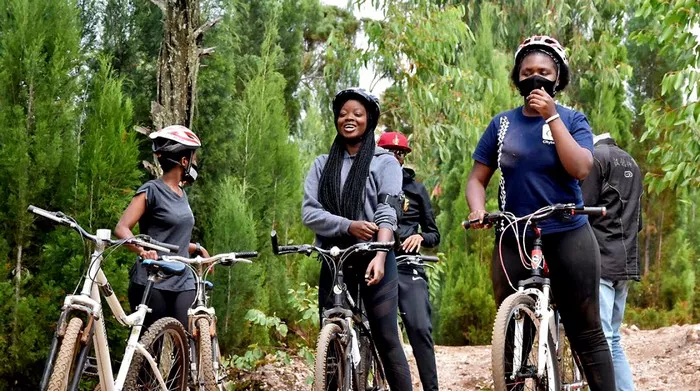Cycling is not only a fantastic form of exercise but also an exhilarating way to explore the world around us. Whether you’re an avid cyclist or a weekend warrior, embarking on a long cycle ride can be both physically demanding and mentally rewarding. However, after pushing your body to its limits on the road or trail, proper recovery is essential to ensure you bounce back stronger for your next adventure. In this article, we’ll delve into the key steps you should take post-ride to optimize your recovery and enhance your overall cycling experience.
Hydrate and Refuel
First and foremost, replenishing fluids and nutrients lost during your ride is paramount for effective recovery. Cycling can lead to significant sweat loss, resulting in dehydration and electrolyte imbalances. Therefore, hydrating adequately with water or electrolyte-rich beverages is crucial to restore fluid balance and support optimal muscle function.
Additionally, refueling your body with a balanced post-ride meal is essential to kickstart the recovery process. Aim for a combination of carbohydrates to replenish glycogen stores, protein to repair and rebuild muscle tissue, and healthy fats to support overall recovery. A nutritious meal containing lean protein sources such as chicken, fish, or tofu, paired with complex carbohydrates like brown rice or quinoa, and plenty of vegetables, can help refuel your body and promote muscle recovery.
Stretch and Foam Roll
After a long cycle ride, your muscles may feel tight and fatigued due to prolonged exertion and repetitive movements. Incorporating stretching and foam rolling into your post-ride routine can help alleviate muscle tension, improve flexibility, and reduce the risk of injury.
Focus on targeting key muscle groups used during cycling, such as the quadriceps, hamstrings, calves, and lower back. Hold each stretch for 15-30 seconds, breathing deeply and easing into the stretch without bouncing or forcing the movement. Utilize a foam roller to release tightness and knots in the muscles, applying gentle pressure and rolling back and forth along the length of each muscle group.
Recovery Ride or Active Rest
While it may seem counterintuitive, engaging in a short, low-intensity recovery ride or active rest activity the day after a long cycle can actually facilitate recovery and enhance circulation. A gentle spin on flat terrain or a leisurely walk can help flush out metabolic waste products, promote blood flow to fatigued muscles, and accelerate recovery without adding undue stress to the body.
Keep the intensity light and focus on enjoying the movement rather than pushing yourself to the limit. This active recovery approach can help prevent stiffness and soreness while promoting overall recovery and readiness for future rides.
Rest and Sleep
Rest and sleep are often overlooked yet critical components of the recovery process. During sleep, the body undergoes repair and regeneration, including muscle growth and tissue repair. Aim for 7-9 hours of quality sleep per night to support optimal recovery and performance.
In addition to nightly sleep, incorporating rest days into your training schedule is essential to allow your body time to recover and adapt to the demands of cycling. Listen to your body’s signals and prioritize rest when needed, especially after intense or prolonged rides. Restorative activities such as meditation, gentle yoga, or relaxation techniques can also help promote physical and mental recovery.
Nutrition and Supplements
In addition to post-ride meals, strategic nutrition and supplementation can further support recovery and enhance performance. Consider incorporating the following nutrients and supplements into your post-ride routine:
1. Protein: Consuming a protein-rich snack or shake within 30 minutes to an hour after your ride can help kickstart muscle repair and recovery. Opt for high-quality protein sources such as whey, casein, or plant-based protein powders.
2. Branched-Chain Amino Acids (BCAAs): BCAAs, including leucine, isoleucine, and valine, are essential amino acids that play a key role in muscle protein synthesis and recovery. Supplementing with BCAAs before, during, or after your ride can help reduce muscle soreness and support recovery.
3. Omega-3 Fatty Acids: Omega-3 fatty acids have anti-inflammatory properties that can help reduce exercise-induced inflammation and promote recovery. Incorporate foods rich in omega-3s such as fatty fish, flaxseeds, and walnuts into your post-ride meals, or consider taking a fish oil supplement.
4. Tart Cherry Juice: Tart cherry juice is rich in antioxidants and has been shown to reduce muscle soreness and inflammation following strenuous exercise. Enjoying a glass of tart cherry juice post-ride may help enhance recovery and alleviate muscle discomfort.
Conclusion
After a long cycle ride, proper recovery is essential to optimize performance, prevent injury, and ensure long-term enjoyment of cycling. By prioritizing hydration, nutrition, rest, and recovery strategies such as stretching, foam rolling, and active rest, you can support your body’s natural healing processes and bounce back stronger for your next adventure on the road or trail. Remember to listen to your body’s cues, adjust your recovery routine as needed, and enjoy the journey as much as the destination. Happy cycling!

